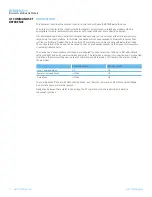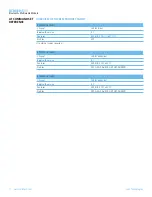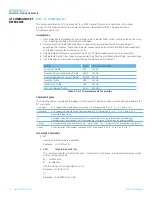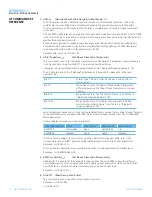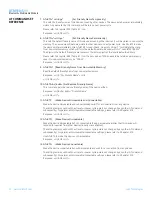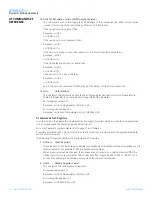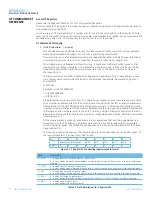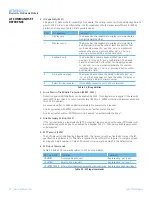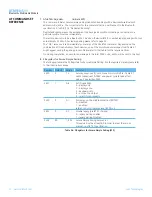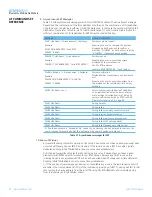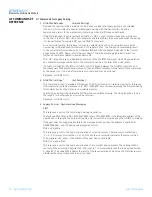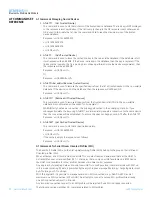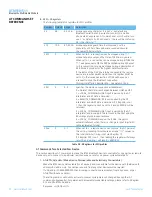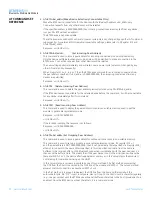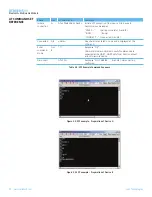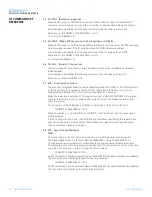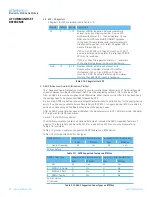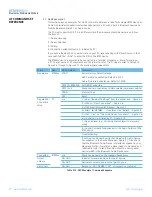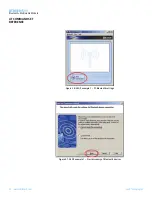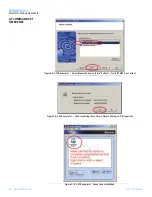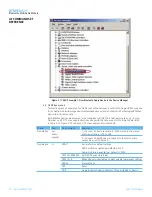
22
www.lairdtech.com
Laird Technologies
BTM510/511
Bluetooth
®
Multimedia Module
9. Asynchronous SSP Messages
Table 3.7 lists asynchronous messages which occur if MITM is enabled. The actually sent message
depends on the combination of the IO capabilities of both ends. The combination of IO capabilities
of both devices can also be insufficient for MITM protection. In that case the pairing will fail (PAIR 2
<BdAddr>). Please refer Table 5.6 in BT2.1+EDR specification [1], vol3, Generic Access Profile for
sufficient combinations of IO-capabilities for MITM (=authenticated link key).
Message
Action / Comment
PAIR ? <BdAddr>,”<friendlyname>”,<Passkey>
Example:
PAIR ? 0016A4000002,”Laird BTM
000002”,863611
Passkey compare request:
Expecting the user to compare the passkey
displayed on both ends and to confirm a
match by “AT+BTBY” at both ends or reject by
“AT+BTBN” if passkey does not match.
PASSKEY ? <BdAddr>,”<friendlyname>”
Example:
PASSKEY ? 0016A4000001,”Laird BTM 000001”
Passkey request:
Expecting the user to enter the passkey
displayed by the remote device.
Use AT+BTB<passkey>,
example: AT+BTB012345 *see(1) below
PAIR N <BdAddr>,”<friendlyname>”,<Passkey>
Example:
PASSKEY N 0016A4000002,”Laird BTM
000002”,164585
Passkey notification:
Display BdAddr, friendly name and passkey to
user.
Expecting the user to enter the passkey from
this message at the remote device’s numeric
keyboard.
PAIR 0 <BdAddr> <nn>
Successfully paired with device of <BdAddr>.
<nn> (optional) indicates the status of auto
-
matic storage to trusted device list. Value 0 =
success; settings controlled by S325 to S328.
Please refer to section 2.3, page 82.
PAIR 1 <BdAddr>
Pairing timeout
PAIR 2 <BdAddr>
Pairing failed
PAIR 3 <BdAddr>
Pairing failed (too many repeat attempts)
PAIR 4 <BdAddr>
Pairing rejected by remote device
PAIR 5 <BdAddr>
Pairing failed (unit keys not supported)
PAIR 6 <BdAddr>
Pairing failed (SSP not supported)
PAIR 7 <BdAddr>
Pairing failed (already busy with pairing)
(1) If both devices have a “KeyboardOnly” capability, no pass key can be displayed. In that case, the
user is required to invent and enter the identical 6 digit numeric passkey at both ends.
Table 3.7: Asynchronous messages for SSP
10. Known SSP Issues
a.) General Bonding (automatic pairing on link setup if devices have not been paired previously) does
not work with legacy devices (BT2.0 and earlier). If the remote device is BT2.0 or earlier, initiate
dedicated bonding (AT+BTW<BdAddr>) prior to connection establishment.
b.) Outgoing General Bonding (automatic pairing on link setup if devices have not been paired
previously) with MITM does not work with two BTM devices, because any UART input on the
initiating device is not accepted until the link has been established. Workaround: initiate dedicated
bonding (AT+BTW<BdAddr>) prior to connection establishment.
c.) If the link key of previously paired devices is not available any more in the remote device but still
available in the trusted device list (TDL) of the local device (query by AT+BTT?), pairing will fail. In that
case remove the device address from the local TDL using AT+BTD<BdAddr> and reinitiate pairing
from the local device (AT+BTW<Bd_addr>).
AT COMMAND SET
REFERENCE


